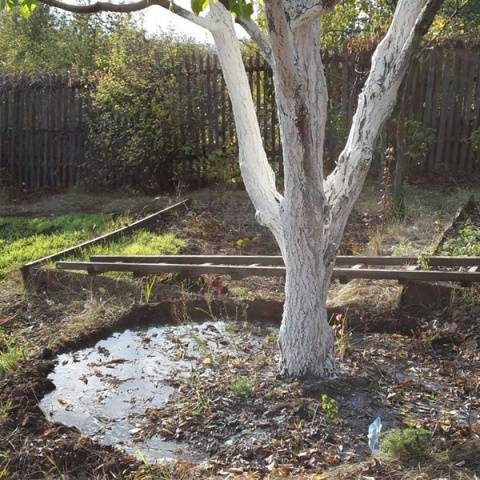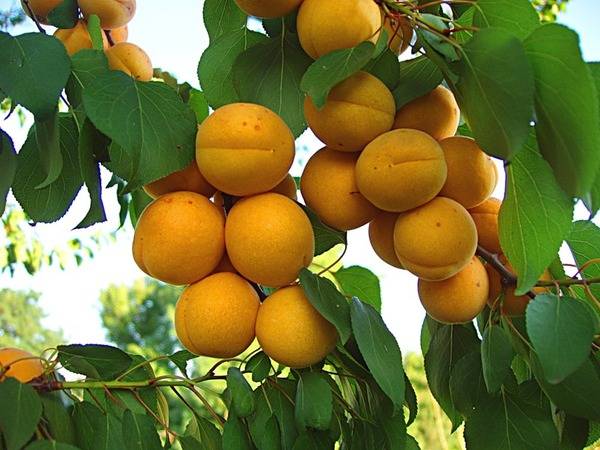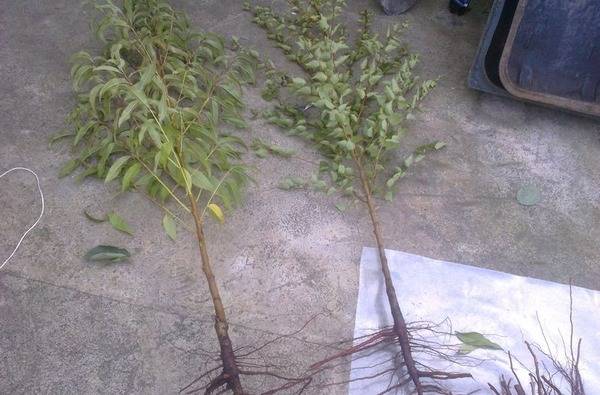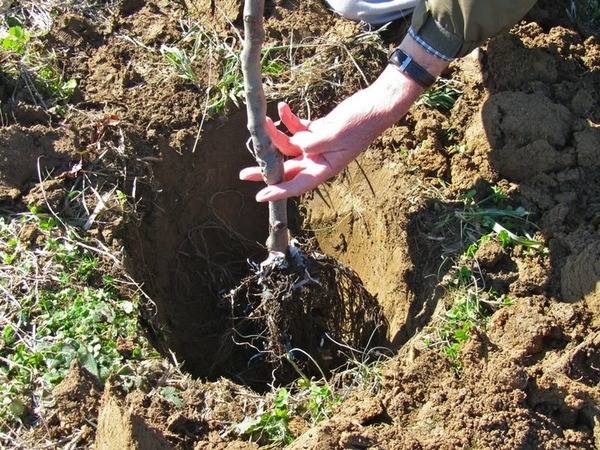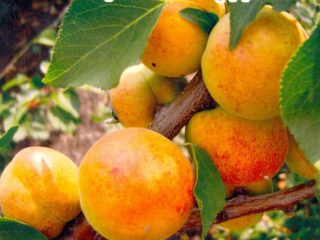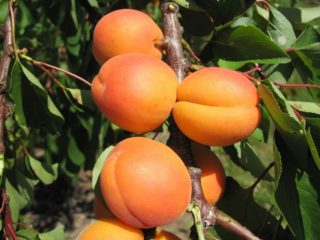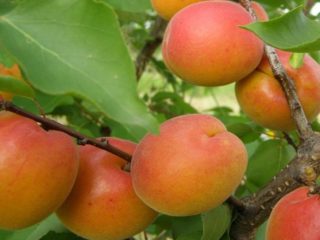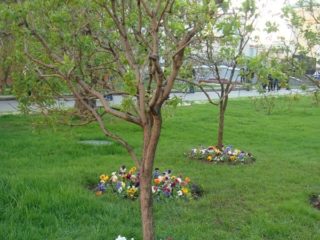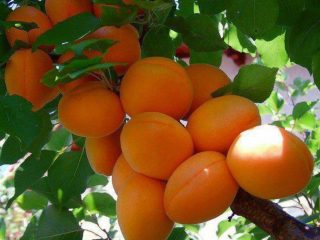Content
For planting a variety of fruit crops like apricot Zhigulevsky souvenir, you should familiarize yourself with its description and main characteristics. When choosing a seedling for rooting, you need to know how to choose the right plant. The quality of the resulting crop depends on the selected area and the soil in which the young apricot tree will be placed.
Breeding history
A variety of apricot Zhigulevsky souvenir was bred by an amateur breeder, self-taught in the field of growing fruit crops - Bessmertnov V.V. The apricot was obtained in the territories of Samara, in the city of Zhigulevsk.
Description of culture
In the description of the apricot Zhigulevsky souvenir it is said that the trees of the variety grow quickly, stretch to a height of 3-4 m. The crown has a pyramidal shape, has an average foliage density. The bark on the branches has a smooth structure, light brown in color.
Every year apricot Zhigulevsky souvenir produces green shoots with a fine geniculate structure. On the branches are placed oval-shaped, elongated leaf plates with a pointed end. According to the external structure, the leaves are wrinkled, with a rich green color. On the underside there is pubescence with villi.
Fruits are yellow with a reddish side. The inner flesh has a pale orange tone, dryish. Apricots Zhigulevsky souvenir of medium size, 22-35 gr.
Apricot Zhigulevsky souvenir is planted in areas of central Russia. Unfavorable conditions provoke the fall of flower buds, which leads to a lack of harvest. The variety brings the largest harvest volumes when planting seedlings in the area from Voronezh to Siberian Abakan.
Characteristics
To get a high-quality harvest by the middle of summer, it is recommended to familiarize yourself with the characteristics of the apricot variety Zhigulevsky souvenir.
Drought resistance, winter hardiness
Apricot Zhigulevsky souvenir does not tolerate long-term lack of nutritional moisture. If the weather conditions in summer allow the near-trunk circle to remain wet, then it is not worth adding moisture. If the summer is hot, then watering is carried out as needed, when the soil dries out near the tree rhizomes.
The tree is not afraid of frost, withstands a drop in temperature above -300FROM.
Pollination, flowering period, ripening time
Apricot Zhigulevsky souvenir - early variety. Its flowering begins in early March. A plant with flowers can tolerate sub-zero temperatures normally, this will not affect yield.
Zhigulevsky Souvenir is a self-fertile apricot. Fruits are set even in adverse weather conditions. Apricots ripen by mid-summer, not earlier than July 22-27.If the collection is unripe, the storage time is reduced to 7 days.
Productivity, fruiting
Due to self-pollination, the apricot yield is good. The disadvantage that affects the volume of the harvested crop is recurrent spring frosts.
The harvested apricots are smooth, without deformation, with a distinct transverse stripe. One tree can be harvested on average up to 45 kg. of apricot fruit Zhigulevsky souvenir. They are distinguished by good transportability, but when injured they quickly deteriorate.
Application area
Apricot Zhigulevsky souvenir is used both for fresh consumption and for preparing various preparations for the winter. It turns out delicious jam from fruits.
Disease and pest resistance
Apricot Zhigulevsky souvenir is not subject to infection with pathogenic bacteria. With constant monitoring of the state of the leaf plates, colonization by parasitic insects is detected in time, which contributes to their elimination.
Advantages and disadvantages
The disadvantage of growing apricot Zhigulevsky souvenir is its sensitivity to weather conditions. Swelling of the buds in early spring leads to fruit loss.
Positive aspects of planting a variety of apricot Zhigulevsky souvenir:
- Good frost resistance.
- Self-pollination capability.
- Immune to diseases and parasitic species.
For the rapid development of the tree, specific care is required.
Landing features
To grow a young seedling, optimal growing conditions are required. A place, soil, neighbors are selected.
Recommended timing
Apricot Zhigulevsky souvenir with a closed root system takes root in the spring, so that the seedling has time to release adventitious roots and prepare for wintering.
Choosing the right place
Zhigulevsky Souvenir does not like soil where groundwater is present. Place the apricot on a hillock, in a lighted place. The site needs to be protected from drafts and piercing winds.
If it is not possible to find a place, drainage is done. There are no special requirements for the soil of the apricot Zhigulevsky souvenir.
What crops can and cannot be planted next to an apricot
Neighbors apricot Zhigulevsky does not accept a souvenir. Closely located currants of any shade and raspberries negatively affect the apricot. Do not plant a young tree on the ground after removing plums, cherries or peaches.
Any crops block the seedlings from light, absorb nutrient moisture and fertilizing.
Selection and preparation of planting material
It is better to purchase a seedling rooted. Bare rhizomes can be chapped and take a long time to take root after rooting. Development of the root system is more favorable to acclimatize in a new place, and will not be exposed to diseases.
You need to consider the rhizomes. They should be at least 10-15 cm in length, branched, healthy, free from rot or signs of disease.
Landing algorithm
Apricot seedlings are planted Zhigulevsky souvenir at a distance of at least 4-5 m. The pit is prepared in the fall. It is dug out in the size of 70x70x70 cm. A hill is made at the bottom, a seedling is placed on it. The rhizomes are straightened to the sides, covered with earth.
A pole is stuck next to the rhizomes as a support for the young tree. When rooting, make sure that the root collar is 7-8 cm above the ground.
Follow-up care of the culture
Subsequent care for the plant is carried out according to the rules:
- Pruning - carried out after planting so that a twig with a height of 0.5-0.9 m remains.
- Watering - in dry summer every day. In wet weather and is not required.
- Top dressing - is introduced during active vegetation with organic and mineral substances.
- Preparation for winter - the seedlings are wrapped in burlap to avoid freezing. Peat and spruce branches are applied to the trunk circle, which will prevent damage to the bark by rodents in the cold.
Following the care recommendations, a powerful tree is formed, giving a high-quality harvest every year.
Diseases and pests, methods of control and prevention
In some cases, Zhigulevsky souvenir becomes infected with pests and pathogenic bacteria. The following diseases are distinguished and measures to combat them.
Disease | Symptoms of the problem | Precautions and Exposure |
Cytosporosis | Small gray tubercles are formed on the bark. The foliage withers, the branches wither | Dry shoots are removed, for prevention and treatment in spring, the tree is sprayed with Bordeaux mixture (1%) |
Bacterial necrosis | The bark becomes covered with burns that turn into ulcers, from which gum flows | The affected areas are cut from the tree and burned. Open sections are disinfected with a solution of copper sulfate (1%), covered with garden varnish |
Moniliosis | Leaves and shoots are covered with a brown tint, wither | When the buds are blooming, they are sprayed with Bordeaux 1% liquid. If signs are detected, irrigate the tree with Topaz or Topsin-M |
According to reviews about the apricot Zhigulevsky souvenir, the plant is often attacked by various parasitic individuals.
Pests | Symptoms of the problem | Precautions and Exposure |
Aphid | Placed on the underside of the sheet. Juice is sucked out of the leaf, which leads to curling and drying | Damaged fruits are removed from the tree. The old bark is removed, the trunk is whitewashed, the soil is dug up. The foliage is sprayed with Chlorophos (0.2%), Entobacterin (0.5%), Fufan, Fitoferm |
Moth | Spoil the fruits from the inside | |
Leaf roll | Eats all flower buds and developing fruits |
Through constant monitoring and timely neutralization of the first signs of disease or the presence of parasites, crop loss can be avoided.
Conclusion
Zhigulevsky souvenir has significant advantages over other varieties of apricots. But to get a high-quality harvest, it is worth planting the seedling correctly and caring for the plant.

